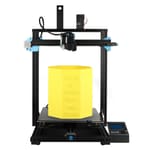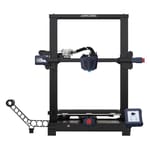Kingroon has been gaining some notability for producing low-cost printers that have features comparable to more expensive 3D printers… at least on paper. The KP5L is no exception. It is a $300 printer that is easy to assemble and comes with a medium-sized print bed and linear rails on all axes.
The previous Kingroon printer, the KP3S, was fairly popular amongst a small group of very vocal fans who swore by its print quality. It remains to be seen if the KP5L can create that kind of following. With this new printer’s build volume of 300 x 300 x 330 mm, Kingroon is also entering the mid-sized category with many well-established printers and companies.
Hopefully, the printer has what it takes to make an impact against Kingroon’s main competitors here, the likes of Sovol SVO3, Anycubic Kobra Plus, and Creality Ender 3 Max.
Features
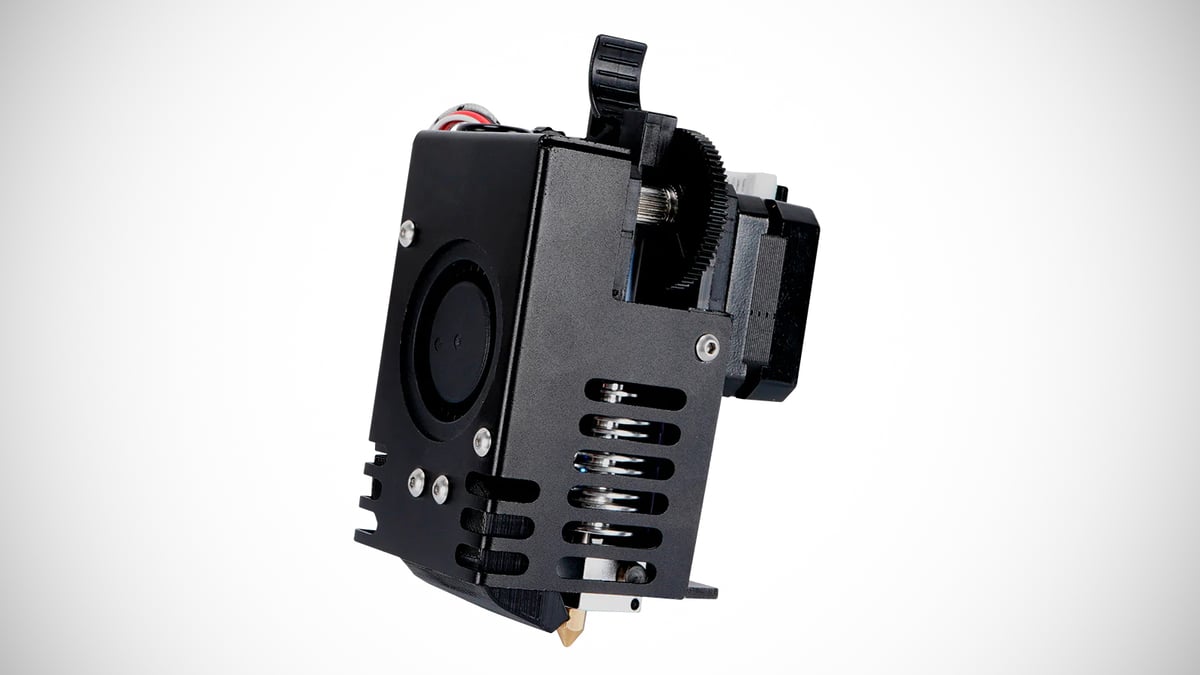
Titan extruder
KP5L has a Titan direct extruder with a double-gear feeding system (which can also be found on the KP3S), and an accompanying filament sensor. The extruder is probably a knockoff but, judging from its performance on the KP3S, it should work as intended.
Medium-sized print volume
The print bed is medium-sized at 300 x 300 mm, with the z-axis topping off at 330 mm. It is made of carborundum glass, which is porous and lends to better adhesion than untextured glass, and it has to be manually leveled. The maximum temperature for the bed is 100 ℃.
Medium-sized print volume
The print bed is medium-sized at 300 x 300 mm, with the z-axis topping off at 330 mm. It is made of carborundum glass, which is porous and lends to better adhesion than untextured glass, and it has to be manually leveled. The maximum temperature for the bed is 100 ℃.
Linear Rails
The printer’s standout feature has to be the inclusion of double-axis SGR15 linear rails on all three axes. Linear rails are generally only seen on much more expensive printers, so their inclusion on a printer in the KP5L’s price range is very interesting.
Silent drivers
Kingroon also claims to have reduced the sound its printer makes by using TMC2225 stepper drivers. The chips feature a silent control mode they call StealthChop, which Trinamic — the chip manufacturer — claims reduces the noise of motor operation and increases power efficiency.
Further Features
2.4- inch capacitive touchscreen: The KP5L has a 2.4-inch touchscreen that lets you control various functions on the printer.
Automatic print recovery: The Kingroon can automatically resume a print in case of power failure, or if you need to replace the filament. It is a pretty standard feature in modern 3D printers.
Quick assembly: The printer comes mostly assembled. Users just have to connect the base to the top gantry and are ready to go. Kingroon claims you can have it up and running in 10 minutes.
Nozzle and filaments: The nozzle can be heated up to 260 ℃. This should allow the KP5L to play with most consumer filaments like PLA, ABS, PETG, and TPU.

Reviews
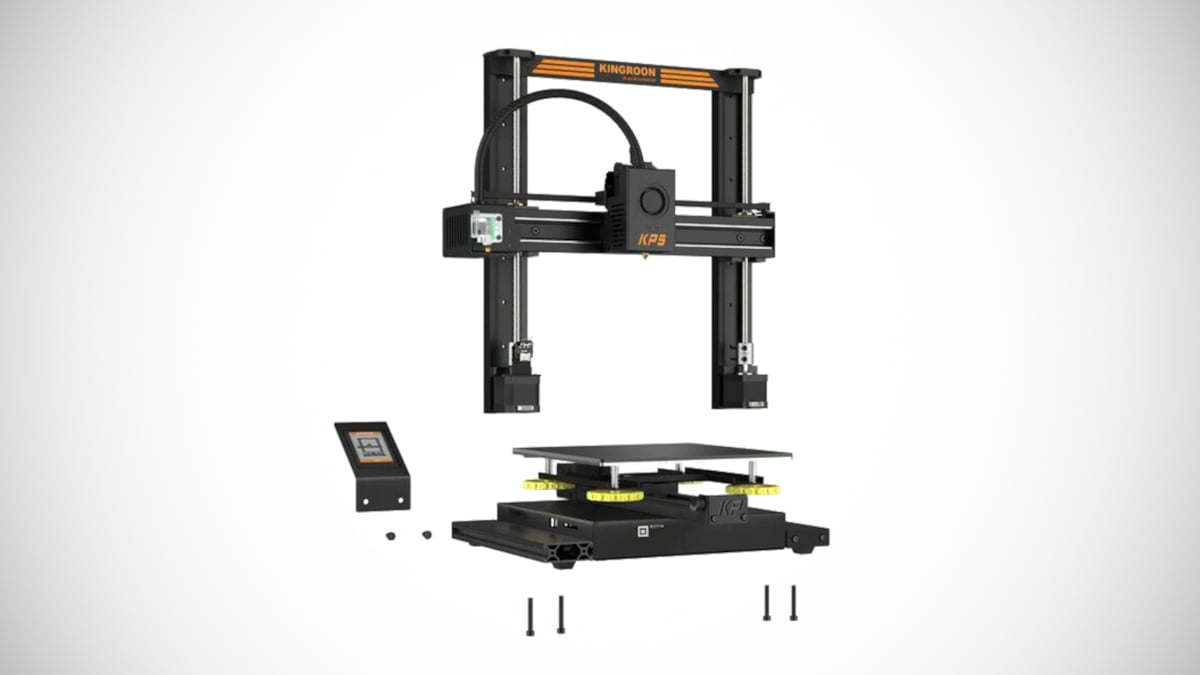

Price

Though, the three competing printers have a solid track record — which can’t be said for this relatively new Kingroon.

Tech Specs
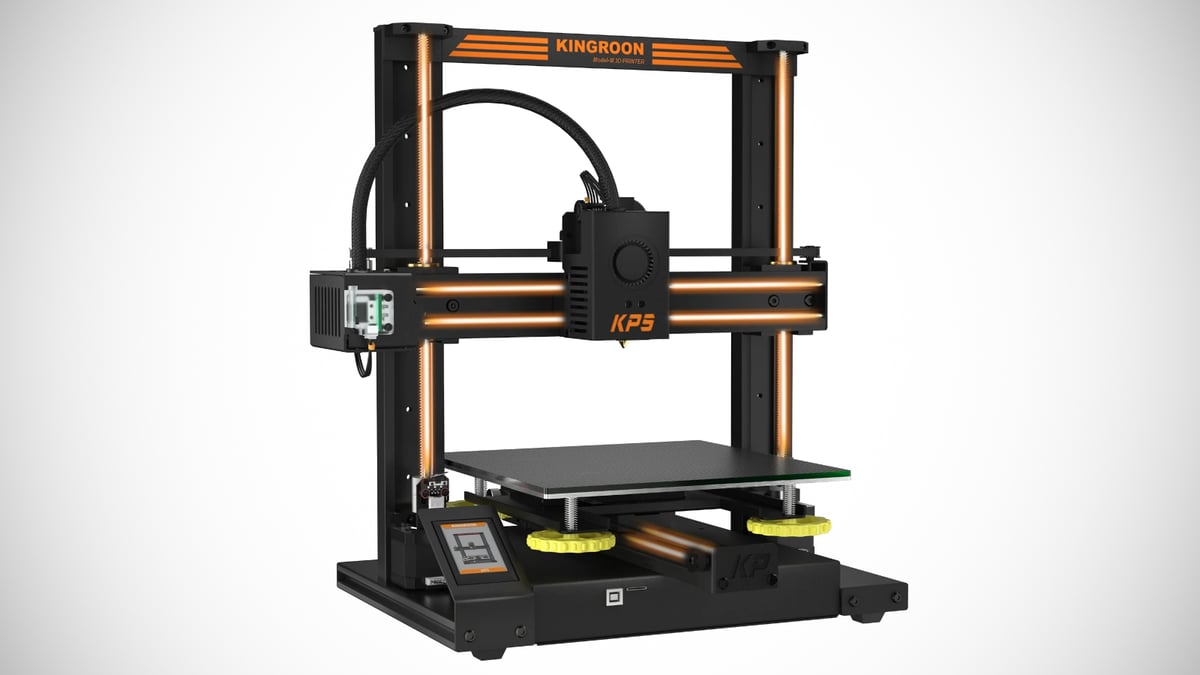
General Specifications
- Technology: Fused deposition modeling (FDM)
- Year: 2022
- Assembly: Partially assembled
- Mechanical arrangement: Cartesian-XZ-head
- Manufacturer: Kingroon
3D Printer Properties
- Build volume: 300 x 300 x 330 mm
- Feeder system: Direct drive
- Print head: Single nozzle
- Nozzle size: 0.4 mm
- Max. hot end temperature: 260 ℃
- Max. heated bed temperature: 100 ℃
- Print bed material: Carborundum glass
- Frame: Aluminum
- Bed leveling: Manual
- Display: 2.4-inch touchscreen
- Connectivity: microSD, USB
- Print recovery: Yes
- Filament sensor: Yes
- Camera: No
Materials
- Filament diameter: 1.75 mm
- Third-party filament: Yes
- Filament materials: PLA, ABS, PETG, TPU
Software
- Recommended slicer: Cura
- Operating system: Windows, macOS, Linux
- File types: STL, OBJ, AMF
Dimensions and Weight
- Frame dimensions: 375 x 395 x 430 mm
- Weight: 14 kg

Similar Printers
If you are still confused about which printer to get, check out our Best 3D Printers Guide, or you can scroll down to browse our list of similar printers with comparable features:
Sovol SVO3
The Sovol SVO3, at $389, costs a bit more than the Kingroon KPL5. It features a somewhat larger 350 x 350 bed with convenient auto-leveling and belt tensioners to tighten loose belts quickly. The Z-axis has a maximum height of 400 mm. However, it is missing the linear rails and the touch screen, which can be perceived as more premium features for less money on the Kingroon.
Anycubic Kobra Plus
The Anycubic Kobra Plus is a true competitor to the Kingroon. It has similarly sized with a 300 x 300 x 350 mm print area and also uses a carborundum glass bed, which can be heated to 100 ℃. The Anycubic does come with an auto-leveling system and a larger 4.3-inch touchscreen, not to mention a sneaky tool drawer to keep all your tools handy. However, the machine retails at $499, which is significantly more expensive than the KP5L, and without the linear rail system.
Creality Ender 3 Max
The Creality Ender 3 Max is another printer in this size category that performs well. It has a 300 x 300 x 340 mm print area and costs just $270. The Ender 3 Max also has a heated carborundum glass platform with similar heating restrictions. The feeder system is a Bowden instead of the direct extruder on the KP5L. Like the Kingroon, the Max’s bed has to be manually leveled. While the Kingroon features a linear rail system, the Creality machine is more competitive with its pricing. It also has the benefit of being a tried and tested product with a massive user community, making it an excellent option for those who don’t want to experiment with a relatively new brand.

License: The text of "Kingroon KP5L: Specs, Price, Release & Reviews" by All3DP is licensed under a Creative Commons Attribution 4.0 International License.
CERTAIN CONTENT THAT APPEARS ON THIS SITE COMES FROM AMAZON. THIS CONTENT IS PROVIDED ‘AS IS’ AND IS SUBJECT TO CHANGE OR REMOVAL AT ANY TIME.


